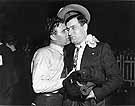
|
|
|

|

|

|

|
|
Click on an image to see a larger, more detailed picture.
|
|
|
|
|
| 1946: The Pursuit of Justice |

|
pg. 640 |

|
|
|
|
| |
|
|
|
|
|
|
| |
During trials held in the German city of Nuremberg, the IMT brought four charges against the defendants: (1) crimes against peace, (2) war crimes, (3) crimes against humanity, and (4) conspiracy to commit any of the aforementioned crimes. Making no mention of the Holocaust or the Shoah--such terms were not yet widespread--these indictments did not identify specifically what had happened to the Jews or to other civilian populations targeted by the Nazis and their collaborators. Yet, Article 6 of the IMT's charter did define crimes against humanity to include "murder, extermination, enslavement, deportation, and other inhumane acts committed against any civilian population, before or during the war, or persecutions on political, racial or religious grounds...." Taylor led the prosecution's case against the German High Command--the generals and admirals who directed Nazi Germany's military conquests. Those conquests put vast numbers of European Jews under Nazi domination and enabled the Einsatzgruppen, the SS, and the German Army itself to carry out a "war against the Jews." Taylor's explicit task was not to show that members of the German High Command were also Holocaust perpetrators; his aim was to document that Nazi Germany's military professionals had waged war in criminal ways. When the verdicts were announced on October 1, 1946, 19 of the Nuremberg defendants--including Martin Bormann, head of the Nazi Party Chancellery, who was tried in absentia--were found guilty. Three men were acquitted: Hjalmar Schacht, former minister of economics; Franz von Papen, first vice-chancellor of the Nazi government; and Hans Fritzsche, chief of the Propaganda Ministry's Radio Division. Taylor achieved his goal, however, when the guilty verdicts included Nazi military leaders Wilhelm Keitel, chief of staff of the Wehrmacht High Command, and Alfred Jodl, chief of the Wehrmacht Operations Staff. Seven defendants received prison sentences that ranged from ten years to life. Twelve defendants--Keitel and Jodl among them--were condemned to death by hanging. Ten executions took place in the early hours of October 16, 1946. Having been tried in absentia, Bormann was missing from the group of the condemned. Shortly before Hermann Göring, the commander-in-chief of the Luftwaffe, was to be hanged, he escaped the gallows when he killed himself by swallowing cyanide. The pursuit of justice at Nuremberg did not end when the IMT concluded its work in the autumn of 1946. Thousands of Nazi war-crimes trials took place in numerous countries before and after those conducted by the IMT. The Subsequent Nuremberg Proceedings began in December 1946. Lasting until April 1949, they consisted of 12 trials under American jurisdiction. Now chief counsel for the prosecution, Telford Taylor played a key part in those proceedings, which ultimately focused on 185 Nazi doctors, jurists, industrialists, military and SS leaders (including Einsatzgruppen personnel), and other professionals and government officials. Their indictments specified crimes ranging from abusive medical experimentation and participation in Nazi Germany's "euthanasia" program to exploitation of slave labor, the administration of concentration camps, and mass murder.
|

|

|

|

|
|

Andrew Klein (right), a survivor of Auschwitz, is greeted in New York by his brother, William.
Photo: FPG International
|
|
|
|
|
| 1946: The Pursuit of Justice |

|
pg. 640 |

|
|
The Holocaust Chronicle
© 2009 Publications International, Ltd.
|
|
